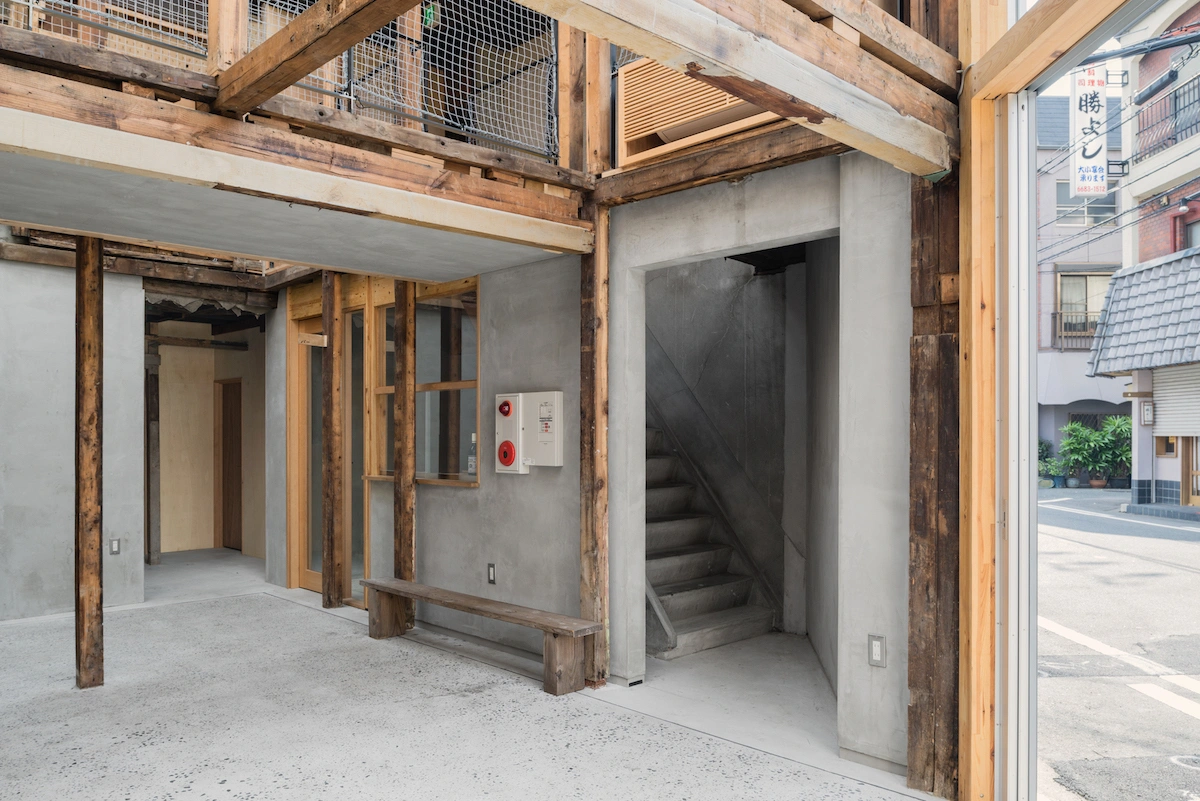Chidori-Bunka by Dot Architects redefines architectural preservation by embracing the beauty of the ordinary, transforming a former home in Osaka, Japan into a dynamic, evolving space for art, community, and daily life.
More than a mere renovation, it is a meditation on the value of the ordinary—a repurposed residential structure that once housed a 90-year-old woman, now serving as a communal hub where art, commerce, and daily life intertwine. The project raises fundamental questions: What buildings do we deem worthy of preservation? And how does architecture participate in collective memory?
Rather than erasing the building’s layered history, Dot Architects chose to embrace its bricolage-like structure, retaining the traces of ad-hoc extensions and modifications. The process was slow and meticulous—measuring every beam by hand, engaging with long-time residents, and piecing together the site's informal past. This approach resulted in a space that feels neither polished nor nostalgic, but alive with the patina of everyday life. The addition of a transparent glass facade invites passersby to enter, making the building as much a social catalyst as a physical structure.
Chidori-Bunka’s function is fluid—part cafe, part gallery, part shop, part bar. This openness reflects its role within the broader Kitakagaya Creative Village initiative, a city-led effort to revitalize a once-thriving shipbuilding district now marked by vacant buildings and an aging population. With spaces like MASK (Mega Art Storage Kitakagaya) offering free studios to artists, Kitakagaya is gradually transforming into an incubator for experimental urban living. Dot Architects actively contribute to this shift, positioning architecture as a means of fostering social connectivity.
Yet, Chidori-Bunka resists becoming a fixed entity. It is an evolving structure, shaped by the people who use it. The shop, for instance, sells salvaged materials from the renovation, allowing the building’s history to be redistributed rather than discarded. Upstairs, artists are given the freedom to construct their own workspaces, reinforcing the idea that architecture is not static but participatory. In this way, the project is less about preservation in the conventional sense and more about creating a framework for continuous adaptation.
Chidori-Bunka is a study in the dignity of the everyday. In a city grappling with depopulation and economic shifts, it offers a counter-narrative to large-scale redevelopment—one that values the textures of lived experience over the sheen of the new. By acknowledging the worth of the ordinary, Dot Architects craft not just a building, but a place where people can gather, belong, and subtly reshape their city, one intervention at a time.










